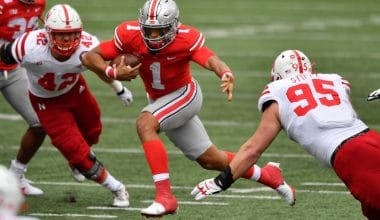Properly writing an MLA citation is very crucial in your academic writing.
Adding a citation to your written research cannot be overemphasized. It not only gets your work to stand out but also gives accord to whom it is due.
In this article, we have discussed what an MLA citation is and how to write an MLA citation.
Get ready to format your document using the steps listed in this article.

Table of contents
Check Out: How to Write in MLA Format: Simple Step-by-step Guide
What is an MLA Citation?
MLA is one of the most common citation styles students and academics use. It was developed as a means for researchers, students, and scholars in the literature and language to format their papers and assignments uniformly.
The MLA citation is a method for developing a paper or assignment, allowing for easy reading.
The Modern Language Association released the 9th and most current edition of their MLA Handbook in April 2021.
Also, the Handbook provides thorough instructions on citing, as well as guidelines for submitting work that adheres to the Modern Language Association’s rules and standards.
It standardizes the way scholars document their sources and format their papers. When everyone documents their sources and papers similarly, it is simple to recognize and understand the sources used for a project.
It is important to credit the original author when borrowing information from a source and placing it in your research or assignment. This is done by creating an MLA citation.
Depending on the information you include in your work, you may place citations in the body of your project and a works-cited list at the end of your project.
Check Also: Best Way To Learn A New Language Fast And Be Good At It
Why are MLA Citations Important?
MLA citations are of utmost importance. Here are some reasons why-
- MLA parenthetical citations are essential because they give credit where credit is due. If you do not, then you are plagiarizing someone else’s work.
- MLA citations also allow readers to find the sources you used to write your paper in your references.
- MLA citations include the author’s name, the title, the publisher, the year published, page numbers, and URLs that aid your writing.
- MLA citations show that you are a responsible researcher and located appropriate and reputable sources supporting the thesis or claim.
- If your work is posted online or in print, others will likely use your research project in their work.
- When scholars and researchers in literature, language, and numerous other fields cite their sources similarly, it makes it easier for readers to look for a citation and understand the difference.
How to write MLA Citation?
There are several ways to write MLA citations. They will be discussed below-
Using In-text Citation
An in-text citation is used when referring to, summarizing, paraphrasing, or quoting another source. Every in-text citation in your paper must have a corresponding entry in your reference list.
In MLA, in-text citations are inserted in the body of your research paper to document the source of your information briefly. Brief in-text citations point the reader to more complete information in the Works Cited list at the end of the paper.
In-text citations include the last name of the author followed by a page number enclosed in parentheses. “Here’s a direct quote” (Smith 8). If the author’s name is not given, use the title’s first word or words. Follow the formatting used in the Works Cited list, such as quotation marks. This is a paraphrase (“Trouble” 22).
MLA in-text citation style uses the author’s last name and the page number from which the quotation or paraphrase is taken, for example: (Smith 163). If the source does not use page numbers, do not include a number in the parenthetical citation: (Smith).
Example of a paragraph with in-text citation
A few researchers in the linguistics field have developed training programs designed to improve native speakers’ ability to understand accented speech (Joshua et al. 246; Thomas 15).
Their training techniques are based on the research described above, indicating that exposure to non-native speech improves comprehension. Joshua and others conducted their training with students preparing to be social workers but noted that other professionals who work with non-native speakers could benefit from a similar program (258).
References
Joshua, Tracey M., et al. “Teaching Native Speakers to Listen to Foreign-accented Speech.” Journal of Multilingual and Multicultural Development, vol. 23, no. 4, 2002, pp. 245–259.
Thomas, Holly K. Training Strategies for Improving Listeners’ Comprehension of Foreign-accented Speech. The University of Colorado, Boulder, 2004.
Citing web pages In-Text
You can site web pages in text as you would any other source, using the author if known. If the author is unknown, use the title as the in-text citation.
Your in-text citation should lead your reader to the corresponding entry in the reference list. Below are examples of using in-text citations with web pages.
General Guidelines
In MLA citation style, the author’s name can be included either in the narrative text of your paper or in parentheses following the reference to the source.
You can use-
Author’s name part of the narrative- Henry and Varonis found that familiarity with the topic is the most important element in comprehending non-native speech (163).
Author’s name in Parentheses- One study found that familiarity with the topic is the most important element in comprehending non-native speech (Henry and Varonis 163).
The group as an author- (American Psychological Association 123)
Multiple works– (separate each work with semi-colons)- Research shows that listening to a particular accent improves comprehension of accented speech in general (Henry and Varonis 143; Thomas 24).
Direct quote- “One study found that “the listener’s familiarity with the topic of discourse greatly facilitates the interpretation of the entire message” (Henry and Varonis 85). Henry and Varonis found that “the listener’s familiarity with the topic of discourse greatly facilitates the interpretation of the entire message” (85).”
When citing works by multiple authors, always spell “and.” Only the first one shown in the source is normally given when a source has three or more authors, followed by et al.
One author: (Field 399)
Works Cited entry:
Field, John. “Intelligibility and the Listener: The Role of Lexical Stress.” TESOL Quarterly, vol. 39, no. 3, 2005, pp. 399-423.
Two authors: (Henry and Varonis 67)
Works cited entry:
Henry, Susan, and Evangeline M. Varonis. “The Effect of Familiarity on the Comprehensibility of Nonnative Speech.” Language Learning, vol. 34, no. 1, 1984, pp. 65-89.
Three or more authors: (Munro et al. 70)
Works cited entry:
Munro, Murray J., et al. “Salient Accents, Covert Attitudes: Consciousness-raising for Pre-service Second Language Teachers.” Prospect, vol. 21, no. 1, 2006, pp. 67–79.
Where you would normally put the author’s last name, instead use the first one, two, or three words from the title. Do not count initial articles like “A,” “An,” or “The.” Please provide enough words to clarify which word you are referring to from your Works Cited list.
If the title in the Works Cited list is in italics, italicize the words from the title in the in-text citation. If the title in the Works Cited list is in quotation marks, put quotation marks around the words from the title in the in-text citation.
Example- (Cell Biology 12)
In-text citation for more than one source
If you want to cite more than one source within the same in-text citation, record the in-text citations as normal and separate them with a semi-colon.
Examples- (Smith 42; Bennett 71). (It Takes Two; Brock 43).
Quoting directly
When you quote directly from a source, enclose the quoted section in quotation marks. Add an in-text citation at the end of the quote with the author’s name and the page number.
Example- “Mother-infant attachment has been a leading topic of developmental research since John Bowlby found that “children raised in institutions were deficient in emotional and personality development” (Hunt 358).”
No page numbers
When you quote from electronic sources that do not provide page numbers (like web pages), cite the author’s name only.
“Three phases of the separation response: protest, despair, and detachment” (Garelli).
Long Quotations
It is long if your quotation extends to more than four lines as you are typing your essay.
Rules for Long Quotations
Four rules apply to long quotations that are different from regular quotations:
- #The line before your long quotation, when introducing the quote, usually ends with a colon.
- #The long quotation is indented half an inch from the rest of the text, so it looks like a text block.
- #There are no quotation marks around the quotation.
- #The period at the end of the quotation comes before your in-text citation as opposed to after, as with regular quotations.
Example-
At the end of Lord of the Flies, the boys are struck with the realization of their behavior: “The tears began to flow, and sobs shook him. He gave himself up to them now for the first time on the island; great, shuddering spasms of grief seemed to wrench his whole body.
His voice rose under the black smoke before the burning wreckage of the island, and infected by that emotion; the other little boys began to shake and sob too. (Golding 186)”
Paraphrasing
When you write information or ideas from a source in your own words, cite the source by adding an in-text citation at the end of the paraphrased portion.
Paraphrasing from One Page
Include a full in-text citation with the author’s name and the page number. Example:
Mother-infant attachment became a leading topic of developmental research following the publication of John Bowlby’s studies (Hunt 65).
Paraphrasing from Multiple Pages
If the paraphrased information/idea is from several pages, include them.
Example- “Mother-infant attachment became a leading topic of developmental research following the publication of John Bowlby’s studies (Hunt 50, 55, 65-71).”
Signal phrases
Readers should be able to move from their own words to the words you quote without feeling an abrupt shift. Signal phrases provide clear signals to prepare the readers for the quotation. If you refer to the author’s name in a sentence, you do not have to include the name again as part of your in-text citation. Instead, include the page number (if there is one) at the end of the quotation or paraphrased section.
Example- “Hunt explains that mother-infant attachment has been a leading topic of developmental research since John Bowlby found that “children raised in institutions were deficient in emotional and personality development” (358).
Repeated use of sources
If you are using information from a single source more than once in succession, you can use a simplified in-text citation.
Example- “Cell biology is an area of science that focuses on the structure and function of cells (Smith 15). It revolves around the idea that the cell is a “fundamental unit of life” (17). Many important scientists have contributed to the evolution of cell biology. Mattias Jakob Schleiden and Theodor Schwann, for example, were scientists who formulated cell theory in 1838 (20).”
Frequently Asked Questions
To do this, you must begin one inch from the top of the first page and flush with the left margin. Type your name, instructor’s name, the course name and number, and the date on separate lines, using double spaces between each, double-space once more and center the title.
While many professors, instructors, and publications allow electronic submission, some prefer printed, hard copies of papers. This section focuses on the type of paper to use for printed submission. If you choose to print your paper, use white paper only. Do not use ivory, off-white, or any other shades or colors. Choose a standard, high-quality paper to print your project on. Do not use cardstock. It is not necessary to use résumé paper. Use a typical, high-quality printer or copy paper.
Use one-inch margins around the entire page. The running head should be the only item seen in the one-inch margin.
Indent the first word in every paragraph. Sentences should begin one-half inch from the left margin.
MLA research paper format requires the entire research paper or MLA format essay to include double-spaced lines. Double-spaced lines should be found between the work’s written body, in the heading, and on the MLA reference page.
In an MLA paper, using any font type that is easy to read is acceptable. Many source types, such as books and articles, use fonts that are easy to read, so if you are seeking an appropriate font style, look at other sources for guidance. Two of the most commonly used fonts are Arial and Times New Roman.
Conclusion
Citations do not always need to start with the name of the author. When your research focuses on a specific individual, that is, someone other than the author, it is appropriate for readers to see that individual’s name at the beginning of the citation.
This is a full guide to writing MLA citations.
References
- scribendi.com – Examples of MLA Citations
- mendeley.com – MLA 8 Citation Guide
- bibme.org – Your Ultimate MLA Format Guide & Generator





